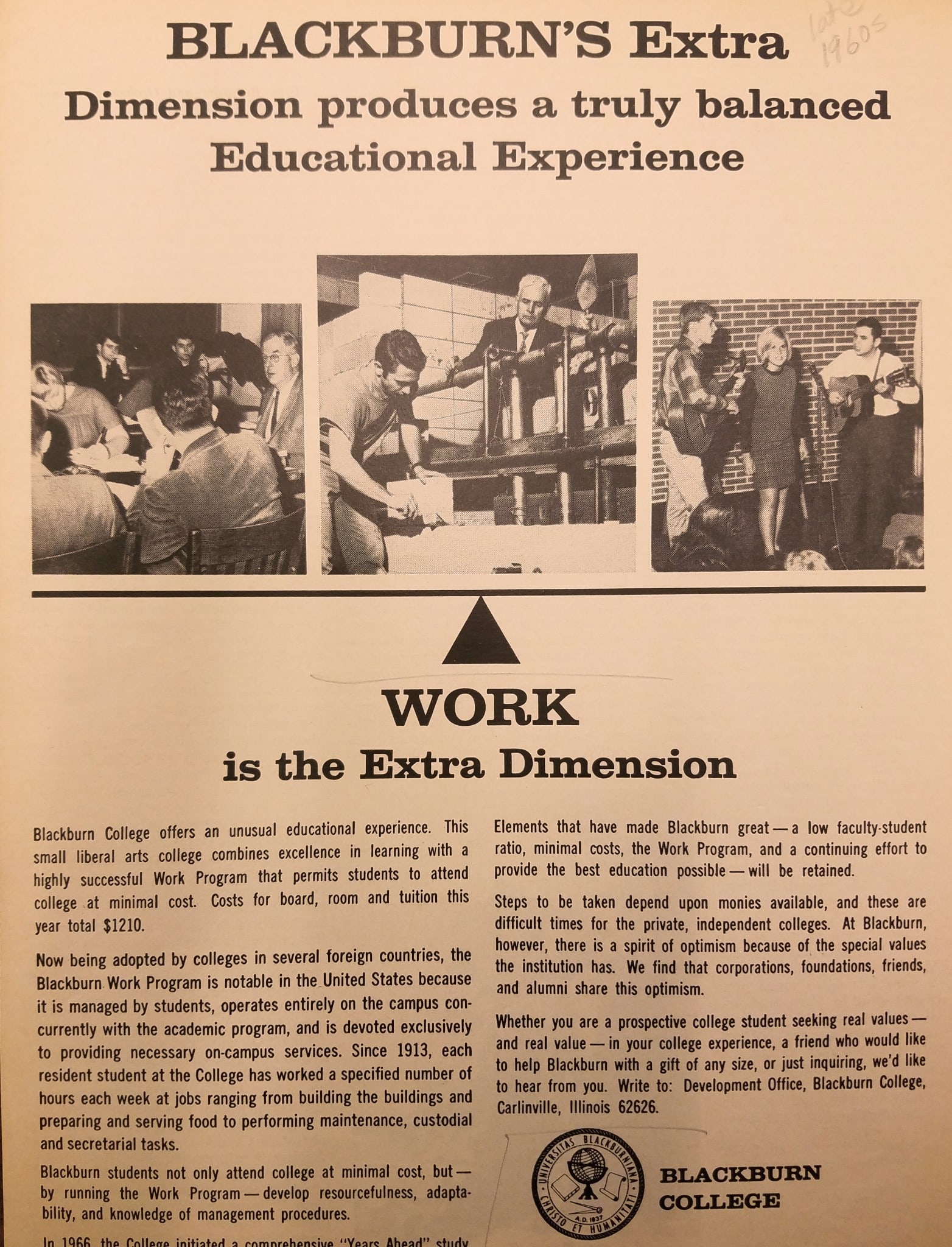The work program is a win-win system for both students and the college. Students receive a reduction in tuition costs as well as skills to help build their resumes, while the college receives a way to attract students and fulfill needed campus services at a cheaper cost. The core principle of the program is to help students help themselves for the good of the community.

The work program has been one of Blackburn’s greatest attributes for over 100 years.
According to Glenn L. McConagha’s book “Blackburn College” the system was first put into place by Dr. William H. Hudson in 1914 when he became president of Blackburn. Based on a work program at Park College in Kansas City, Missouri, Blackburn’s program was originally known as the “Self-Help Plan.” It was designed to not only benefit students but was framed to be the college’s saving grace. At the time, the campus had low enrollment, buildings were in terrible disrepair and the biggest asset the college had was land.
The initial program was much more rigorous than today’s as students worked 18 hours a week with stricter rules. If students missed a day of work they had to go to the hospital on campus and meet with the Dean. Tardiness was also heavily punished as students would be charged hours or days of labor depending on how late they were. Despite the comparatively harsh rules of the program, it became wildly popular with the college receiving over 1,000 applicants the following year. The campus was filled to the point that no more students could be housed in 1914. The number of potential students was so great due to the work program that Hudson asked for retired Pullman cars to hold students and offices.
The work program continued to succeed to the point that, in 1922, enrollment had nearly doubled from 80 to 150. Then there was the formation of a large farm that held dairy cows and swine and the beginnings of construction on Stoddard Hall. This growth led to Blackburn expanding the subjects being taught, and the creation of more work departments.
The “Self-Help Plan” evolved into the work program and the “Work-Study-Play” slogan was later replaced by “Learn, Work, Earn.” The amount of hours worked and amount paid would shift according to new state and federal labor laws and sometimes new departments would open up or close down depending on the needs of the campus. However, the core principles have remained the same since the beginning.

